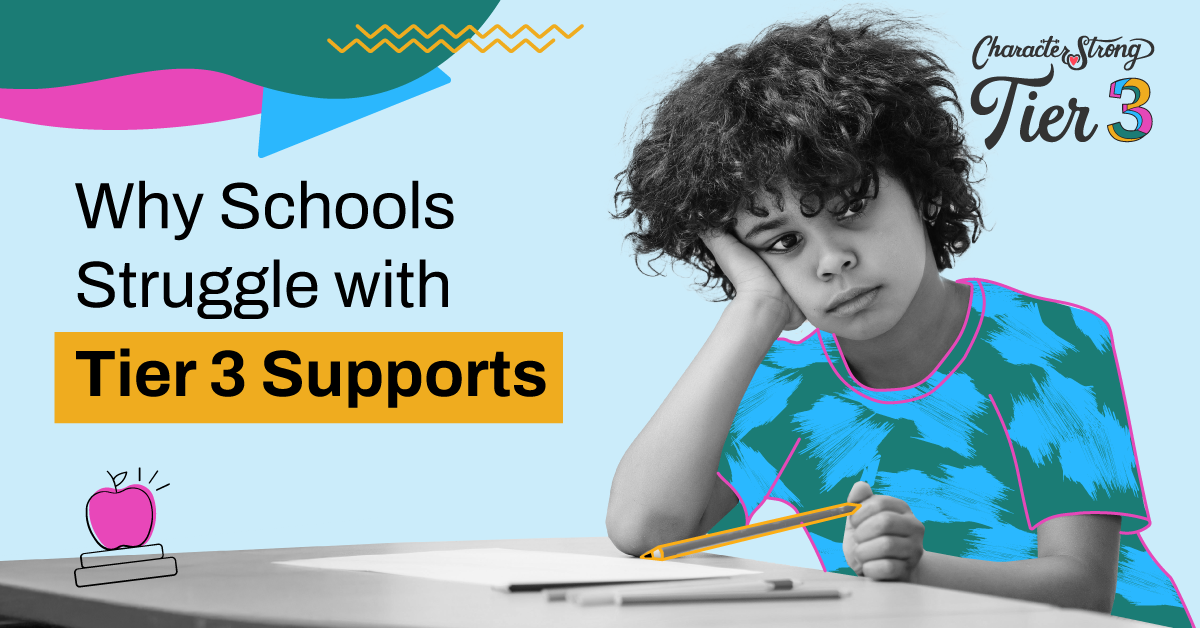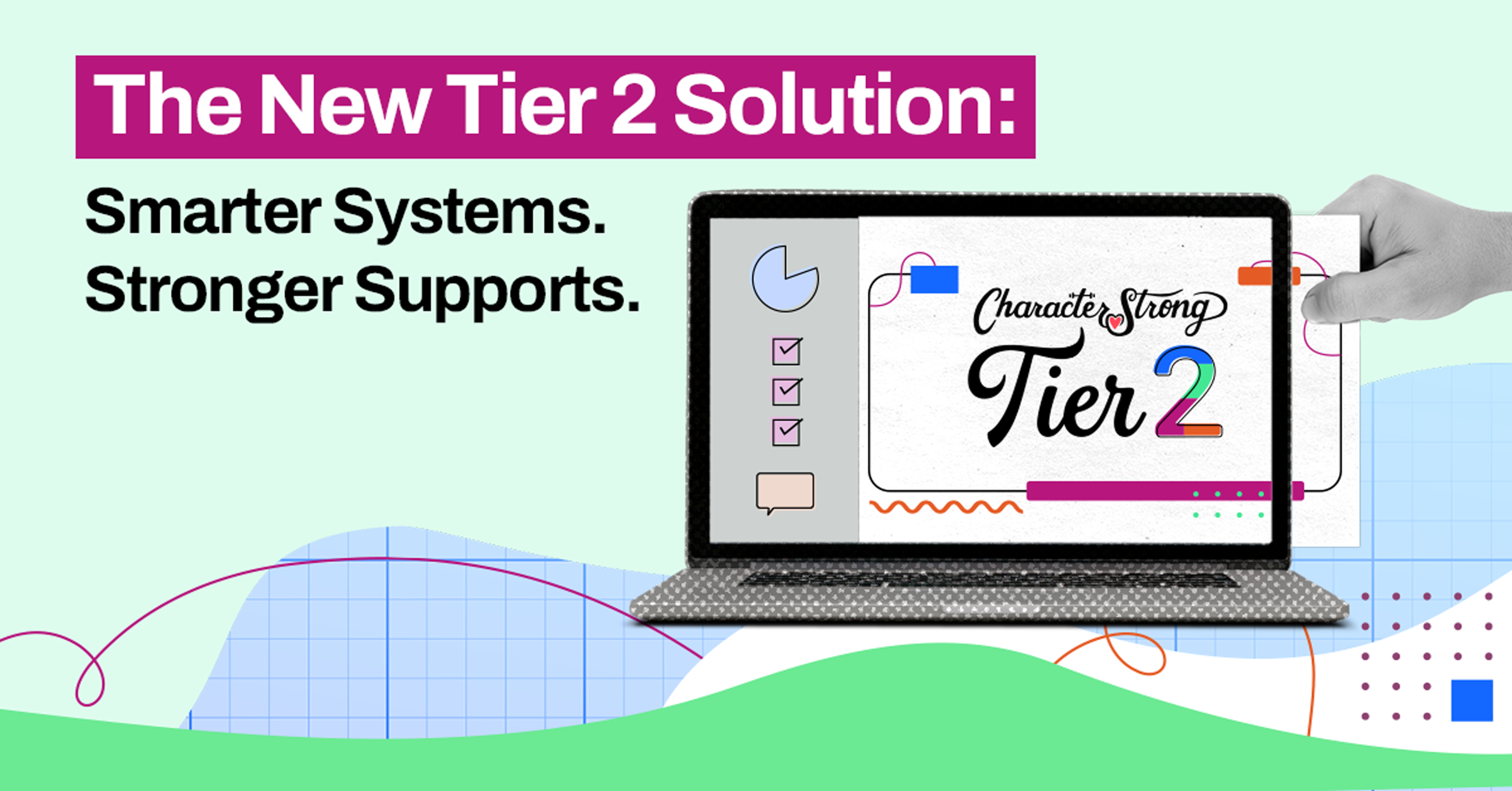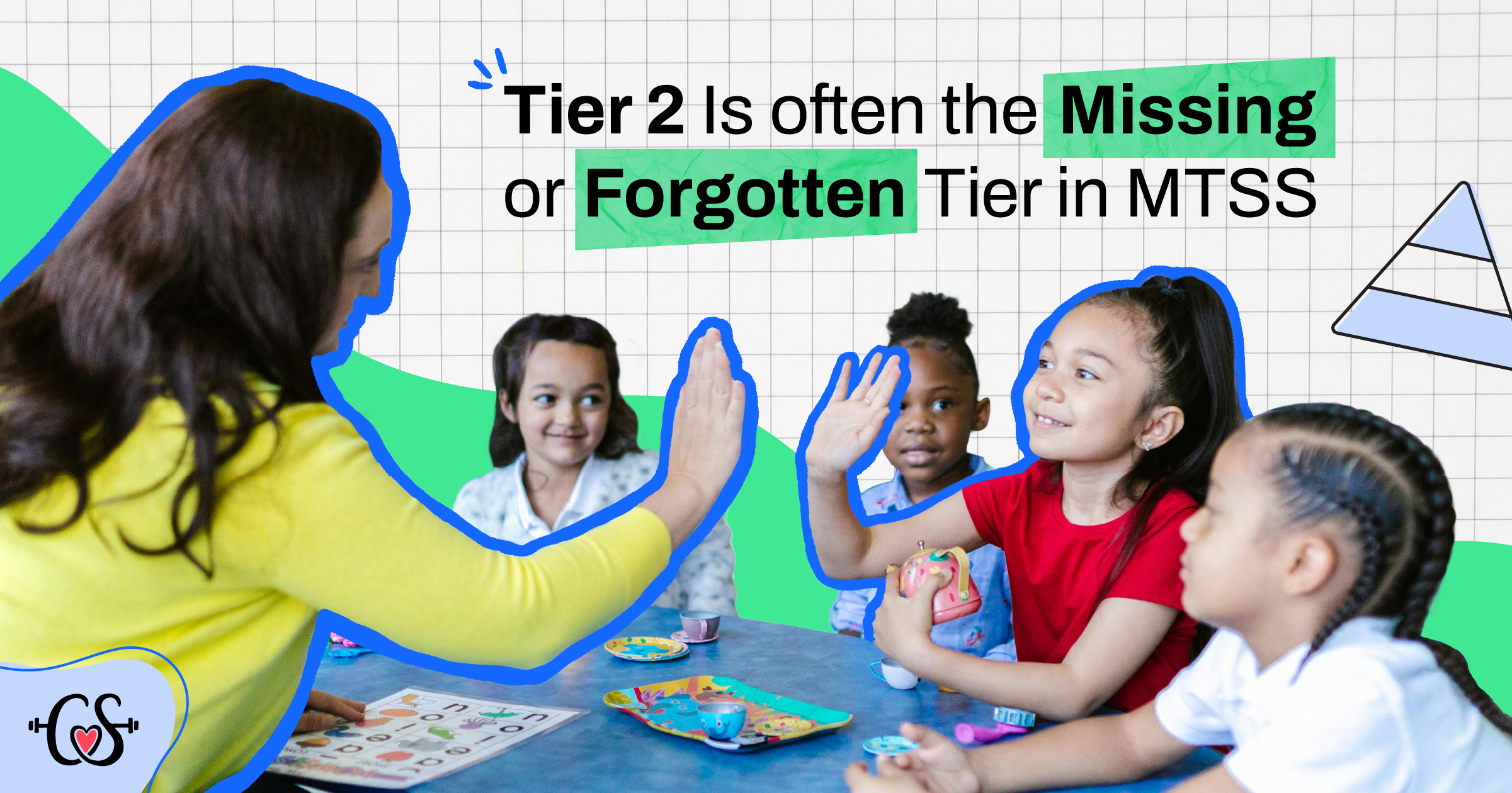When Tier 1 & 2 Aren’t Enough: Building an Effective Tier 3 System in Schools
In the world of education, Multi-Tiered Systems of Support (MTSS) are essential to meet the needs of all students. While Tier 1 (universal supports) and Tier 2 (targeted small group interventions) catch most students, there will always be a small percentage whose needs exceed these levels. So, what happens when Tier 1 and Tier 2 aren’t enough?
Why Tier 3 Matters—Even With Strong Tier 1 and Tier 2 Systems
Even in schools where Tier 1 and Tier 2 are implemented with fidelity, there will always be a small number of students with the most intense and complex needs. These students require personalized, high-intensity interventions that go beyond what most systems currently have in place.
Dr. Clay Cook, Chief Development Officer at CharacterStrong, explains it best: "We can always guarantee variability when the school doors open. Some students will have needs that require more than what Tier 1 and Tier 2 can provide."
Without a clear and effective Tier 3 system:
- Schools risk getting stuck in a cycle of reacting to crises rather than preventing them.
- Students with high needs may fall through the cracks or only receive late-stage interventions.
- Educators can feel overwhelmed and unsupported when addressing the most complex student cases.
Defining Tier 3: It’s Not Just About Special Education
A common misconception is that Tier 3 only applies to students in special education or those who are referred out to external services. However, Tier 3 is broader than that. It’s about creating in-house supports that serve 1-5% of students—those with the most significant needs, whether behavioral, emotional, or academic.
Key Features of an Effective Tier 3 System
A successful Tier 3 system is built on a few foundational elements:
-
Collective Action: Tier 3 is not one person’s job. It requires a coordinated team—school counselors, teachers, administrators, specialists—coming together to problem-solve and implement interventions.
-
Root Cause Analysis: Before implementing a support plan, teams must identify the underlying reasons for a student’s challenges, whether they stem from skill deficits, environmental factors, or mental health needs.
-
Precision-Tailored Interventions: The best Tier 3 supports are personalized and based on data. They address both student skill-building and necessary environmental changes to ensure success.
-
Ongoing Monitoring and Adaptation: Teams regularly review student progress and intervention fidelity, making adjustments as needed to maximize outcomes.
The Two Primary Intervention Pathways at Tier 3
1. Environmental Support Pathway (Behavior-Focused)
- Uses Functional Behavioral Assessment (FBA) to identify the “fire triangle” of unskillful behaviors: triggers (the "match"), setting events (the "lighter fluid"), and functions (why the behavior occurs).
- Leads to developing Behavior Intervention Plans (BIPs) that teach replacement behaviors, prevent challenging situations, and adjust responses to reinforce positive actions.
2. Skill Support Pathway (Mental Health-Focused)
- Leverages modular Cognitive Behavioral Therapy (CBT) techniques tailored to student needs.
- Focuses on building self-regulation, resilience, and coping skills through targeted, small-group or one-on-one interventions.
CharacterStrong has a Tier 3 platform to help schools streamline both pathways, offering tools such as decision-making frameworks, intervention menus, student dashboards, and ongoing professional development.
The Power of Relationship-Based Support
Research shows that about 40% of student behavior change is directly related to the strength of the relationship with the interventionist, often a trusted adult in the school building.
This means internal Tier 3 supports, delivered by familiar school staff, are not just convenient—they are highly effective.
Addressing Barriers to Tier 3 Success
One common challenge to address is how to get overwhelmed teachers and paraprofessionals to consistently follow through on BIPs when they’re already stretched thin.
The answer? Shift the mindset.
"When we reframe Tier 3 supports as essential to academic success—not something extra—we create buy-in," said Corey Notestine, Chief of Staff at CharacterStrong. "Helping a student manage their behavior is an educational strategy, not just a compliance task."
Additionally, systems need to make Tier 3 as low-burden and high-impact as possible by simplifying data collection, providing targeted training, and offering staff clear, actionable plans.
Ready to Strengthen Your Tier 3 Support?
CharacterStrong’s Tier 3 Solution is built to help schools deliver high-impact, personalized interventions for students with the most intensive social, emotional, and behavioral needs, without adding unnecessary burden to staff.
- Four skill-based units (Anxiety, Depression, Executive Functioning, and Trauma)
- Student workbooks aligned to each unit
- Fidelity tools to ensure interventions are delivered effectively
- Real-time progress monitoring with automated graphs
- Behavior-focused supports based on function and context
- Monthly professional learning to keep staff confident and supported
- Decision-making tools to match interventions with student needs
Access Tier 3 Samples to explore curriculum materials, student workbooks, and the platform tools designed to make Tier 3 effective in your school!


